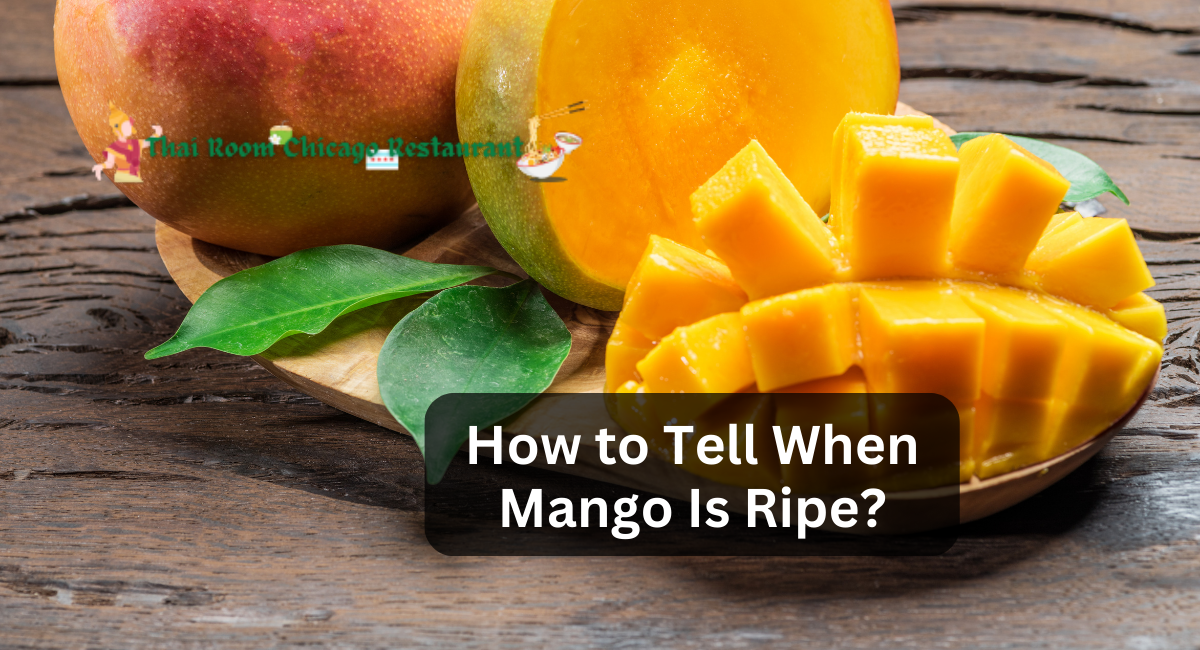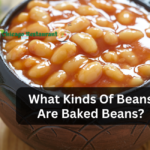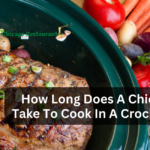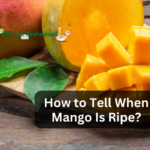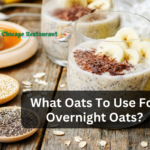Is there anything finer on a hot summer day than a mango, which is juicy, sweet, and delicious?
These tropical fruits can be used in various dishes and make excellent snacks, but biting into an immature mango diminishes the experience considerably.
Knowing whether or not your mango is mature can be a game-changer, which is why we’ve compiled this article. Check out these clever hacks to determine if your mango is ready to consume.
Things You Need To Know
- Gently squeeze the mango. If it can be dented, then it is mature.
- Inhale the mango at its stem. If it smells tropical and sweet, it’s okay to go.
- Look for white or brown spots on the surface of the fruit. If it has spots, it is fit for consumption.
How to Tell When Mango Is Ripe?
Signs A Mango Is Ripe
Squeeze The Mango Gently To See If It Gives
- Apply pressure to the mango using your fingertips. The fruit is ripe when it molds slightly in your palm. If the fruit is firm or soft, it is either unripe or overripe.
- If you can scarcely make a mark on the fruit with the tip of your thumb, it is ready for consumption.
- If your forefinger completely penetrates the skin and the fruit is soft, it is overripe and may be spoiled.
- If your thumb cannot dent the fruit, allow it to ripen further before consuming.
- Press the mango with your palm rather than your fingertips to prevent accidental bruising. Holding the mango in your hand, close your fingers around it and flatten it with the palm’s ball.
Sniff The Stem End Of The Mango To Check For A Sweet Aroma
- It is likely ripe if the fruit has a spicy, fruity, and sweet odor. If the mango has an acidic or alcoholic odor, it is expected to be rotten and should be discarded.
- The aroma of a mature mango should evoke its sweet, juicy, and tropical flavor.
- The sugars within a decayed or spoilt mango ferment produce a foul odor that is bitter and alcoholic.
- Always inhale the stem of a mango, as this is where the aroma is strongest.
Match The Mango Variety To It’s Ripe Color
- Contrary to conventional belief, color does not always determine a mango’s ripeness. Each variety of mango ripens to a distinct color, but a red hue indicates that the fruit has been exposed to sufficient sunlight.[2] Use this color guide to determine whether your mango variety is ripe:
- When ripe, the Ataulfo mango acquires a rich golden hue.
- When mature, the Francis mango is a mixture of green and gold.
- Once mature, the Haden mango changes from green to yellow.
- The Keitt mango will remain green once it has reached maturity.
- The Kent mango will remain predominantly dark green but frequently display yellow undertones or spots.
- The Tommy Atkins mango shows few to no visual indicators of maturity.
- When mature, the Alphonse mango has purple to yellow skin.
- The Edward mango’s epidermis can be pink, yellow, or a combination of the two colors.
- Once mature, the Kesar mango may retain its green color, but it typically turns yellow.
- When mature, the Manila mango has an orange-yellow hue, but it can turn pink.
- The Palmer mango can be purple, red, yellow, or a combination of all three colors.
Check For White Or Brown Spots On The Mango
- This is not always a reliable indicator of ripeness, but if the mango’s peel has freckles, it may be ready to consume. This occurs when the fruit inside has become sweet, and the carbohydrates have matured.
- A mango devoid of spots may still be mature. Spots should not be used as the sole indicator.
- Some mango varieties, such as the Kent mango, may develop yellow patches instead of brown ones.
Pick Up The Fruit And Feel If It’s Heavy
- Compared to an unripe mango, a ripe mango will feel disproportionately weighty.
- Consider comparing the weight of a possibly mature mango to that of an unripe mango.
- The unripe mango should feel significantly lighter than the matured mango.
Notice If The Mango Is Round Or Oblong
Size and overall shape can indicate whether or not a mango is mature, depending on the variety. The majority of ripe mangoes are heavy and oval. Here are some things to watch for:
- When mature, the Ataulfo mango is small and has an oval shape that has been flattened.
- When mature, the Francis mango is oblong and slightly s-shaped.
- The Haden mango is of average size and ovoid to round in shape.
- Keitt mangoes are large and oval.
- The Kent mango is a giant, oval fruit.
- Typically, the Tommy Atkins mango is enormous and elongated.
- The shape of the Alphonse mango is oblong.
- The Edward mango can be either round or oblong.
- Typically, the Kesar mango has a round shape.
- Manila mangoes are notable for their slender aspect.
- When mature, the Palmer mango has an oblong shape.
Feel The Skin To See If It’s Wrinkly
- Usually, a ripe mango’s epidermis will have a few wrinkles. Rub your fingertips lightly over the mango’s surface. It may be ready to eat if you sense ridges or differences in texture.
- Remember that the absence of creases does not necessarily indicate that the mango is unripe, so use this technique in conjunction with other testing methods.
- If a mango has significant wrinkles, it is likely overripe.
- As the Ataulfo mango ripens, it is well-known for developing creases.
Notice If The Skin Around The Mango’s Stem Is Plump
If the mango is round and swollen, it is suitable for consumption. If the mango is flat or depressed, it is unripe.
Before ripening, every mango has a flat stem. As the fruit matures, its pulp, juices, and sugars grow and develop, pressing the branch outward.
Thanks for reading. I hope you find it helpful.
